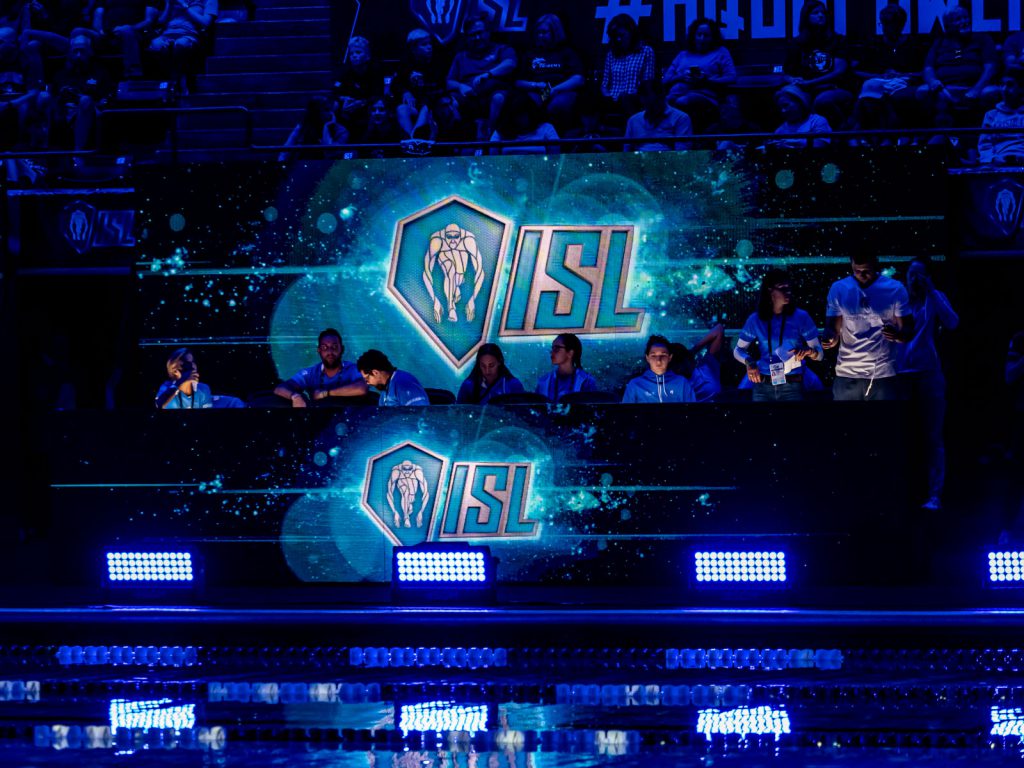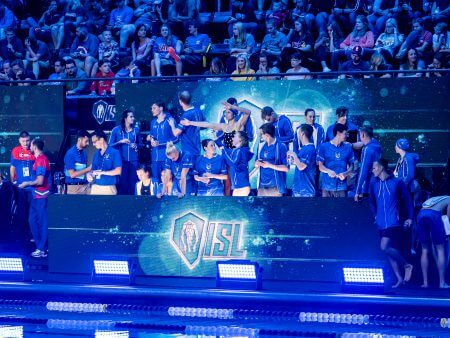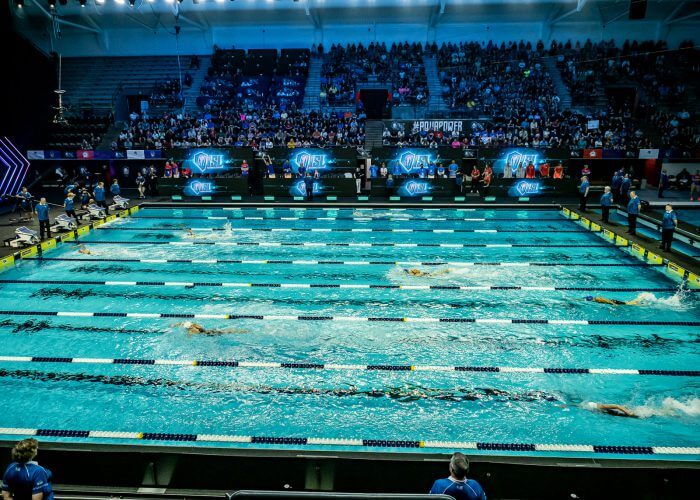International Swimming League Already Hinting At Expansion After Tokyo Olympics

International Swimming League founder Konstantin Grigorishin said in an interview with the Washington Post this week that he is committed to expanding the league following next summer’s Tokyo Olympic Games, despite the financial struggles within the first year.
The ISL has received plenty of media coverage from swimming news outlets like us at Swimming World Magazine, but has not expanded much to outside parties. There are no visible sponsorships on display on the pool deck or on the broadcast.
The ISL became official in January and announced the eight teams and schedule in June. The league moved so quickly to get off the ground that there wasn’t enough time to garner sponsorships and many venues had already been booked.
“We’re in the most tough financial stage. We’re investing the money,” Grigorishin said. “But how do you convince a sponsor to sponsor something that does not exist? Now we have a product.”
There has been some good come out of the ISL with strong international ticket sales, a world record, and an electric atmosphere on the pool deck from athletes and coaches.
Grigorishin is hoping there will be a boost in popularity after the 2020 Olympic Games next summer for the second season which he hopes to start in September. Year one of the International Swimming League saw eight teams compete in seven meets. Year two is projected to add two more teams that will compete in 27 total meets, with a championship slated for April 2021.

Cali Condors at the first ISL meet in Indianapolis; Photo Courtesy: Peter H. Bick
The International Swimming League will host its first “post-season” this weekend in College Park, Maryland as the four US-based teams (Cali Condors, LA Current, DC Trident, NY Breakers) will vie for spots in the Las Vegas final in December, with the top two teams advancing. Next week the four European-based teams (Energy Standard, London Roar, Team Iron, Aqua Centurions) will race for the same stakes in London.
DC is one of the great swimming towns in the United States, hosting perhaps the top club in the country in Nation’s Capital Swim Club. Event organizers are expecting a sold-out crowd in College Park of about 1,000 fans on both Saturday and Sunday.
With many of the world’s best swimmers focused on the 2020 Olympic Games, participation has been sparing. Katie Ledecky, arguably the greatest female swimmer of all-time, has only swam in one meet and will be skipping this week’s meet in Maryland, despite having grown up in nearby Bethesda. Ledecky is in the middle of heavy training and elected to stay back at Stanford in hopes of qualifying for a third Olympics next summer.
The International Swimming League’s Future

Indianapolis crowd for the first ever ISL meet. Photo Courtesy: Peter H. Bick
Ledecky has called the league a turning point for the sport, and others, such as world record holders Lilly King and Adam Peaty, have said the ISL represents the future for swimming. But it also could change training habits and impact performances.
“If it grows into what we believe it can be, it is going to totally change the way swimmers train,” King said. “Normally, we’re such a training-driven sport, where it’s normally train, train, train for maybe two big meets a year. Now it’s more like a league like MLB or NFL, where you’re racing every weekend. So it’s definitely going to impact training. We’ll see if that’s a positive or a negative.”
The crowds at the International Swimming League have been hit-or-miss. The first match in Indianapolis sold between 700 and 1,000 tickets for each session. The meet in Dallas sold out tickets for both days. The European crowds have been fantastic in swimming terms with the Naples crowd reaching near-capacity at 1,600 in attendance, and the Budapest crowd selling 2,000+ each day.
The league was built on the foundation that swimming at the Olympic Games is the most popular sport. In fact, 33 million homes in the United States tuned into night four of NBC’s primetime Olympic coverage, which featured Katie Ledecky in the women’s 200 free and Michael Phelps in the 200 fly. For contrast, 31 million people tuned into Game 7 of the NBA Finals that year when LeBron James took on the 73 win Golden State Warriors in Steph Curry and Klay Thompson, ultimately bringing the Cleveland Cavaliers its first title in franchise history. That was the most watched NBA Finals game since 1998, and yet TWO of the NBC primetime nights (night four and night six — the night of the men’s 200 IM) surpassed game 7 of the NBA Finals in terms of viewership.
Of course Mr. Phelps had something to do with that, bringing the sport of swimming to a whole new level in popularity. It will be interesting to see what will happen to the ratings next summer for NBC’s primetime coverage without him, although Ledecky and Caeleb Dressel should be able to draw in big audiences.
There is proof that swimming is popular so why couldn’t it be that popular during non-Olympic years?
But this wasn’t going to happen overnight; it would have been foolish to think the ISL would be a huge hit right off the bat. Swimming World editor-in-chief Craig Lord said earlier this month in a tweet to Australian correspondent Ian Hanson estimating that it will take “3-5 years for the thing to turn from subsidy to business.”
To think of this in pop culture terms, NBC’s widely popular TV show The Office was in fear of cancellation in its first season, as revealed in the newly launched podcast Office Ladies hosted by actresses Jenna Fischer and Angela Kinsey who starred in all 188 episodes of the show. The show average 5.4 million viewers in its first season, which put them as the 102nd most popular show on television in the 2004-05 season. But NBC green-lit the show for a second season and ratings spiked to 8 million in the second season, eventually peaking at nine million in its fifth season to be the 52nd most popular show on television in the 2008-09 season. Of course streaming services like Netflix have given the show a second life with the show currently sitting 28th on IMDb’s “most popular shows” list that is updated frequently with which shows are trending.
But imagine if the show had been cancelled after its first season. The International Swimming League may never reach the popularity of NBC’s The Office, but the two are comparable in that they need time to grow. Time was kind to The Office, so what will happen to the ISL in three to five years?
Konstantin Grigorishin and the athletes are optimistic that the league has a future. It will just take time to get there.
The Washington Post contributed to this article.




